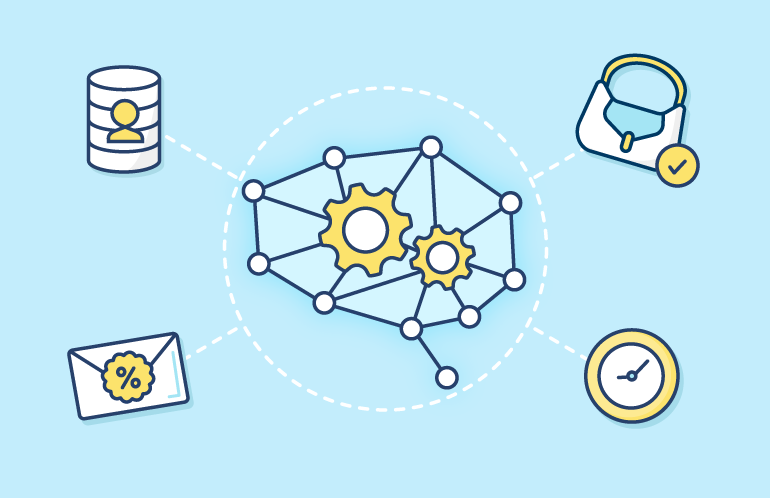Personalization is not the Silver Bullet for CRM


Catégorie : IA for CRM
CRM Marketers often face the difficult task of making the trade-off between commercial pressure and customer experience, and think of personalization technology as the solution to all their engagement problems. Discover what are the most pressing CRM challenges marketers face and why personalization is not the key.
Customer Marketers are the custodians of a brand’s most valuable asset: its customers.
CRM is where long-lasting relationships are built with customers and also a resource that can help a company deliver better performance in the short term. As a result, it is often a lever that is pulled by CRM marketers when they need to push conversions or drive sales quickly.
For a CRM Marketer, it becomes a balancing act between delivering on the realities of short-term objectives and maintaining a healthy database long into the future. Many companies are turning towards CRM personalization that delivers custom consumer journeys and content with a promise of a better digital experience for their customers. CRM personalization uses specific explicit customer data points such as purchase history, intent, birthday, etc to deliver content that, from a customer perspective, seems to be curated just for them.
And although this technology most certainly provides a better, more personalized experience for customers, is it really able to deliver on the realities – commercial pressures – that CRM Marketers face day-to-day? Batch and blasting multiple times a day can still be the de facto strategy which can harm your CRM through message saturation and irrelevancy to many of your customers.
Customer Marketers hear things each day like:
And the list goes on….
Personalization technology relies on automation, but many customer marketers find that this automated approach makes adjusting strategy difficult.
Commercial pressures mean that last minute changes need to be made to campaign planning and personalization solutions aren’t built to easily accommodate these shifts.
So, if personalization falls short on providing a solution that reflects these short-term realities, what is a better approach?
The answer lies within being able to understand true buying intent for each product in a catalogue, and this can only be done through advanced deep learning that goes beyond explicit signals like past intent or purchase history.
Implicit signals are a much stronger indicator of buying intent and personalization tech isn’t focused on this type of AI. Let’s take a deeper look at two examples to see how this works in the real world.
Personalization capabilities would suggest that the answer lies within making product recommendations to each person based on explicit signals. AI for personalization is effective in delivering dynamic content for each user and a custom purchase journey, but falls short of identifying true buying intent for each product based on the data you have on each customer.
This creates two challenges:
By focusing deep learning on creating insights to understand what true buying intent looks like, CRM marketers can send more campaigns targeted by product to the consumers who would buy them. That means marketers can send more product campaigns that drive incremental sales without creating a bad experience for their customers.
Personalization capabilities simply can’t open up these opportunities because the tech isn’t designed to deliver on commercial realities.
Lagging revenue is another area we find CRM Marketers having to put on the hero cape and deliver. Acquisition is not only expensive, it takes time to convince a new customer to buy something so short-term revenue generation isn’t always an easy option. That’s where the CRM Marketer comes in to save the day.
Driving revenue to achieve short-term goals means CRM Marketers need to create more opportunities to buy. This results in additional blast campaigns, basic segmentation based on things like demographics and purchase intent, or adding new slots to newsletters that are already long.
CRM Marketers who are able to tap into deep learning, like the capabilities Splio uses, to truly identify customers who are interested in specific products have the ability to plan campaigns that include products that have similar buying audiences. Now customers can receive newsletters and campaigns with products that they would be truly interested in buying.
That means CRM marketers can promote more products, deliver a higher volume of targeted campaigns based on buying intent, and generate revenue. And this doesn’t need to take months to plan…it can be done in a much shorter time and time is something CRM marketers don’t have a lot of.
It’s not that personalization doesn’t have value for the right organization. It is a useful capability for creating experiences for customers that are unique and catered to them. The digital purchase journey has become more sophisticated and consumers expect more than generic messaging and product recommendations.
But the question is, can you be customer-centric while also delivering on all the product and revenue requests you get from your stakeholders? How about if the turnaround time is hours or days? Then, this promise of increased revenue that personalization offers becomes weaker.
These day-to-day commercial pressures are a reality for CRM Marketers. Only by finding new product opportunities and understanding real buying intent at the planning and strategy phase can marketers truly deliver for both their business and for their customers.